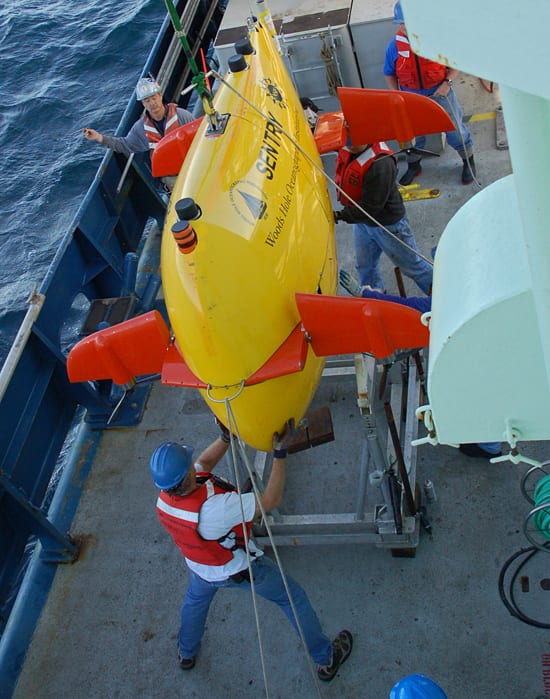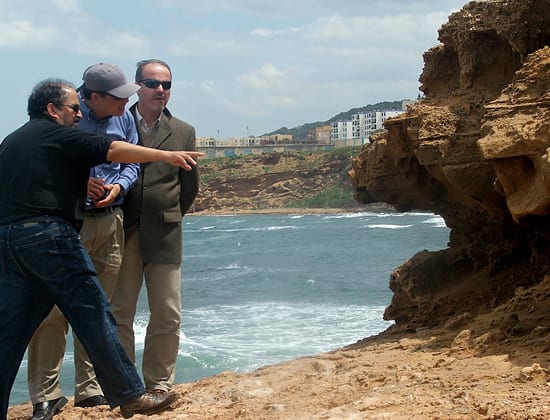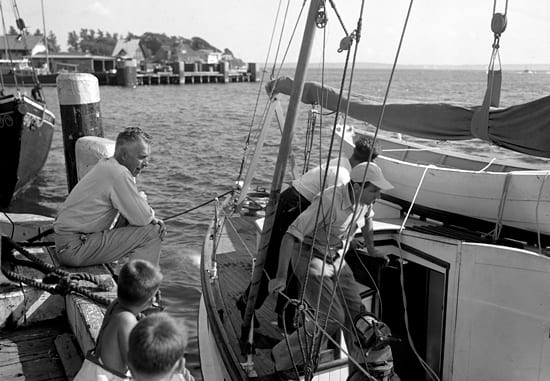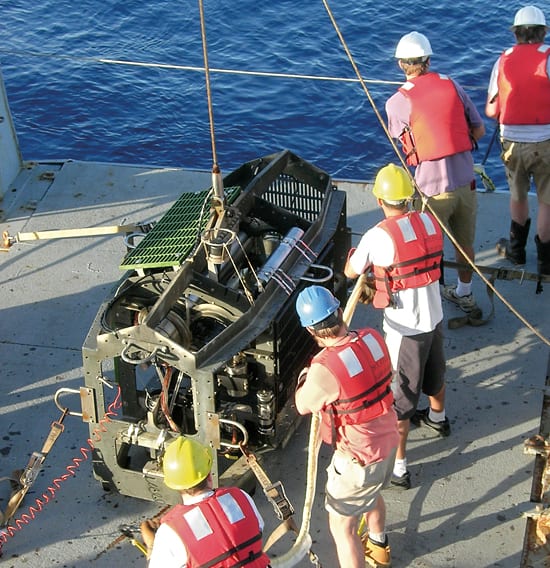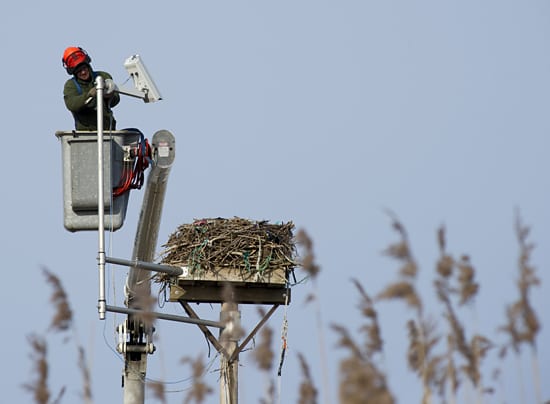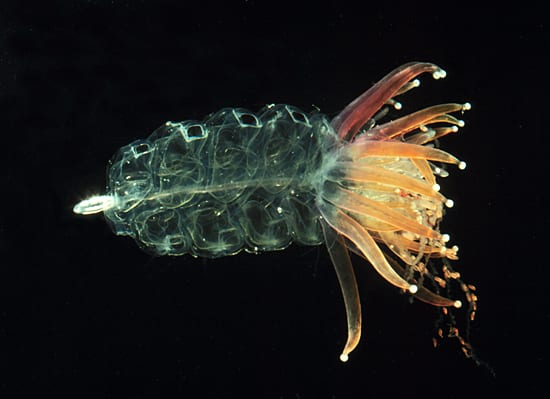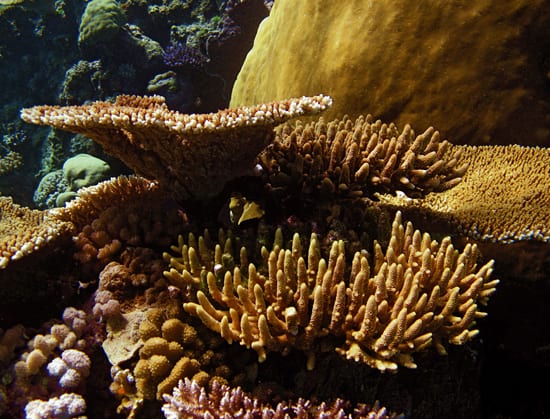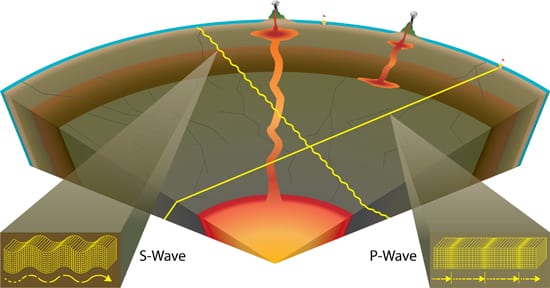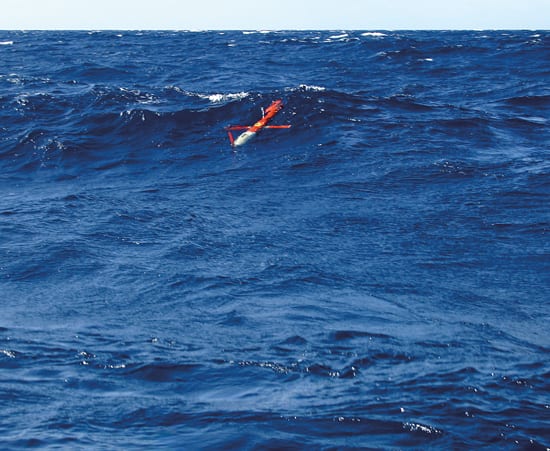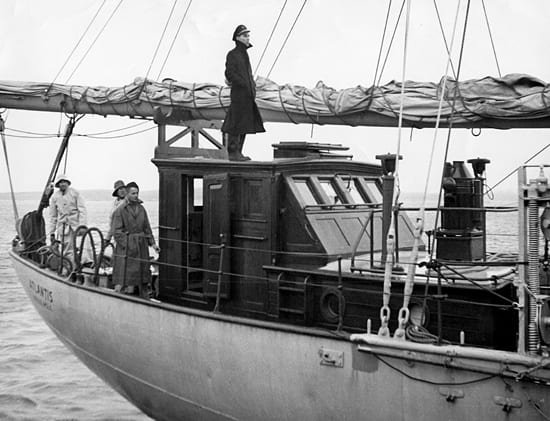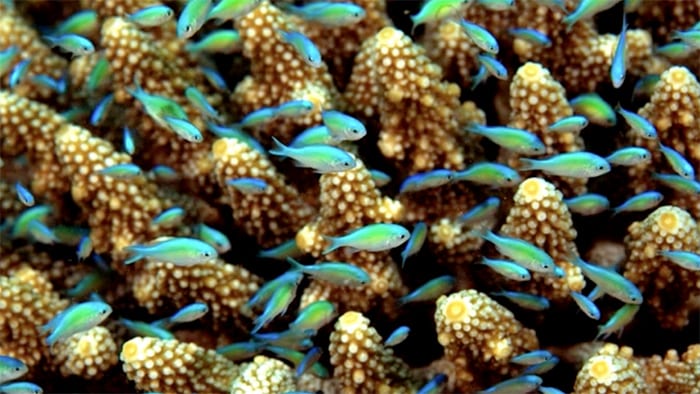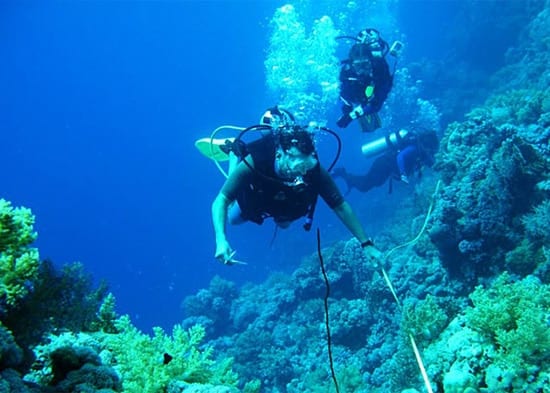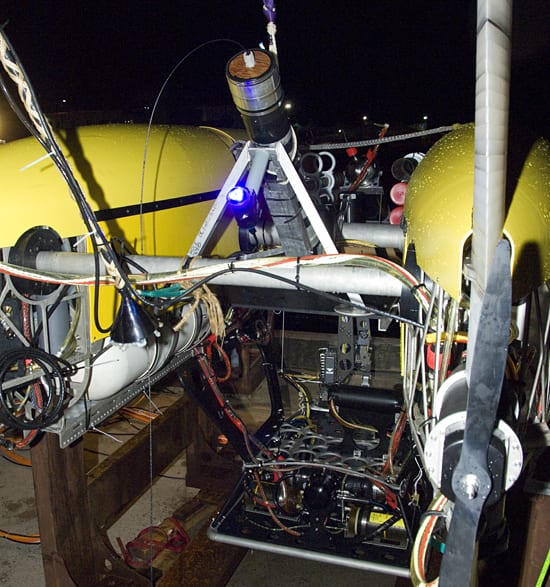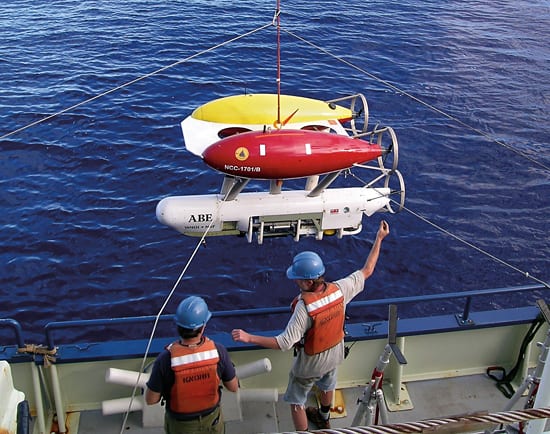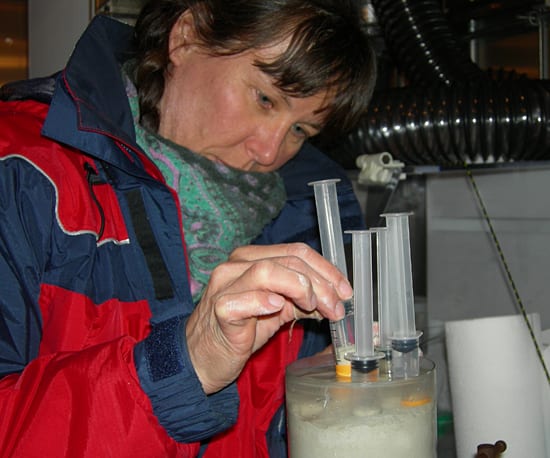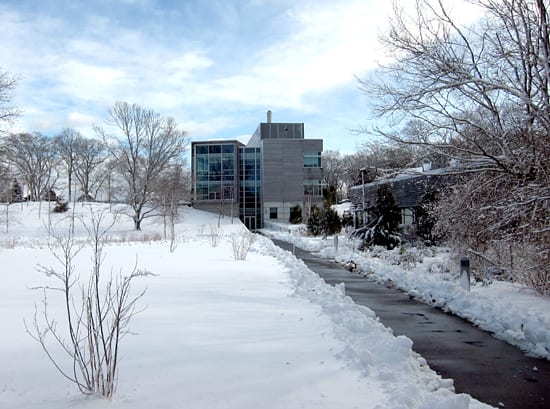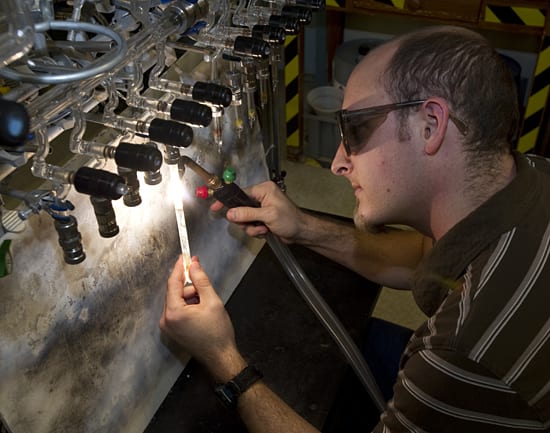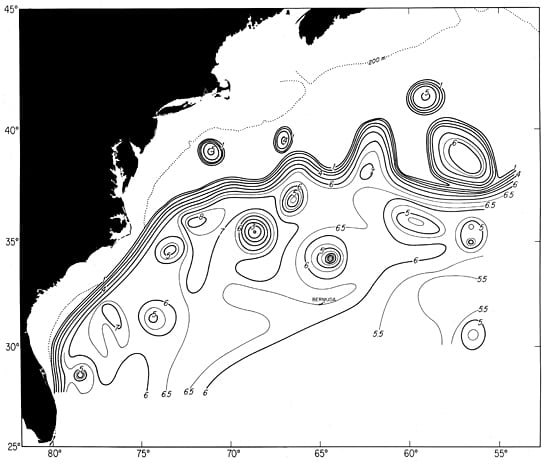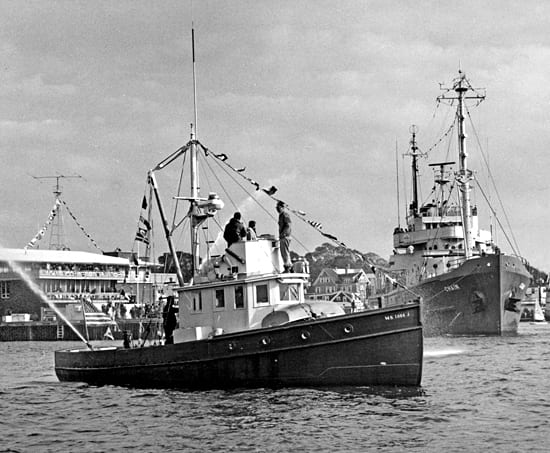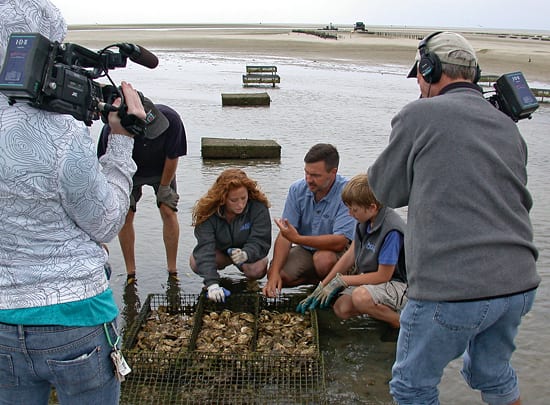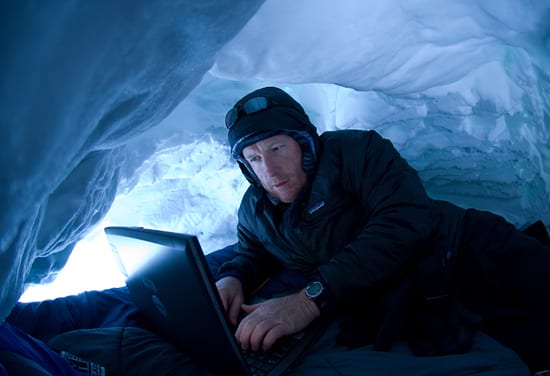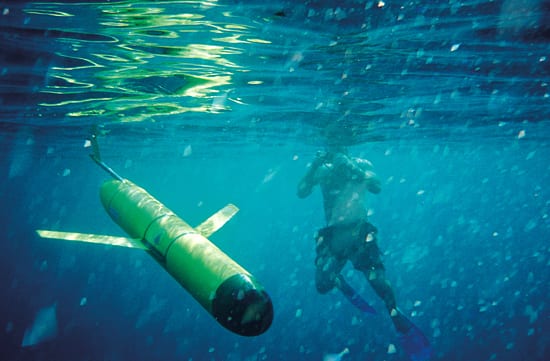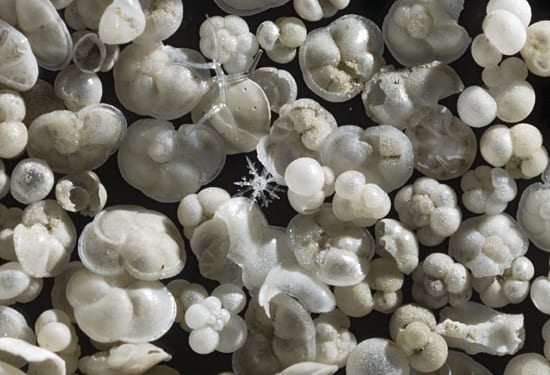Multimedia Items
More autonomy
WHOI’s new deep-diving autonomous underwater vehicle Sentry was launched from the research vessel Atlantis off the coast of Santa Barbara, Calif., in September 2009 to search for cold seeps—naturally occurring…
Read MoreAlgerian quake clues
Senior Scientist Jian Lin (in blue shirt) and colleagues examine geological evidence of past earthquakes near the Mediterranean coast of Algeria. A study of the interplay of stresses surrounding a…
Read MoreWhere currents converge
Columbus O’Donnell Iselin, the second director of the Woods Hole Oceanographic Institution, sees Edmund Watson and others off on a 1950 Gulf Stream cruise aboard a boat called Seal. Iselin,…
Read MoreSidekick
Engineers in the Deep Submergence Laboratory at WHOI designed the remotely operated vehicle Jason II and its sidekick Medea —shown here on the fantail of a ship— for scientific study…
Read MoreReady for spring!
John Lovett, from W.S. Schultz Co., removes the old camera above the osprey nest located on the WHOI Quissett Campus in early March. A new camera was installed in preparation…
Read MorePhysophora hydrostatica
Physophora hydrostatica, a siphonophore, is made up of multiple units, each specialized for a function like swimming, feeding, or reproduction. This “modular” construction allows some siphonophores to grow very large…
Read MoreResearch on the reefs
Coral reefs are among the most diverse, productive ecosystems on Earth, but they are also among the most threatened. Fragile reefs are particularly sensitive to environmental changes, such as warming…
Read MorePS: Earthquakes generate waves
Earthquakes, including the recent major quakes in Chile and Haiti, release energy that radiates two kinds of seismic waves: compression waves (P waves) and shear waves (S waves). P waves…
Read MoreGlide surfing
A Spray Glider climbs a wave on the sea surface. The gliders, which are robotic submarines that navigate underwater without a human crew onboard and without cables connecting them to…
Read MoreA new dawn
A February 2010 sunrise illuminates the entrance to the Woods Hole Oceanographic Institution (WHOI) Quissett campus. WHOI received funding earlier this year for a new addition to the campus —…
Read MoreOn top of the A-boat
Atlantis master Adrian K. Lane stands on top of the deck house of the vessel in 1949. Atlantis was the first Woods Hole Oceanographic Institution research vessel and the first…
Read MoreOnce and Future Corals
By Ari Daniel :: Originally published online March 12, 2010
Read MoreThe Once and Future Corals
New optical system tested
The modem for the newly developed optical communications system is mounted for testing onto the Nereus, WHOI’s new hybrid remotely operated vehicle (HROV). The system, devised by a team led…
Read MoreFarewell ABE
The Autonomous Benthic Explorer, affectionately known as ABE, was one of the first successful submersible vehicles that was both unmanned and untethered to surface ships. First launched in 1995, ABE…
Read MoreSubsampling
WHOI scientist Joan Bernhard — shown here in a cold van subsampling multicores for FLEC (Fluorescently Labeled Embedded Core) analyses — and colleagues from Monterey Bay Aquarium Research Institute tested…
Read MoreA clear path
All paths are clear leading to the Stanley W. Watson Laboratory following a February 2010 snowfall. The 35,570-square-foot facility—located on the WHOI Quissett campus—opened its doors in 2005, providing new…
Read MoreMass spectrometry
Brett Walker, a former Summer Student Fellow, working in the National Ocean Sciences Accelerator Mass Spectrometry Facility (NOSAMS) in 2004. Accelerator mass spectrometry is a method of radiocarbon analysis where…
Read MoreCharting the flow
This chart of 1975 hydrographic and satellite data shows the path of the Gulf Stream and a number of warm-core and cold-core rings (north and south of the stream, respectively)…
Read MoreChain comes home
The Asterias (foreground) welcomes the Chain home from a 20-month, around-the-world cruise in 1970-71 that took investigators to the North and South Atlantic, the Indian Ocean, the Somali Current, the…
Read MoreAquaculture with Aqua Kids
Woods Hole Sea Grant Aquaculture and Fisheries Specialist Bill Walton explains how oysters are raised to the co-hosts of TV’s Aqua Kids program, James and Molly. The cast and crew…
Read MoreBlogging in an extreme environment
In winter 2007, Hugh Powell, a freelance science writer, filed daily dispatches from Ross Island, Antarctica, on Expedition 3 of WHOI’s Live from the Poles. Expedition members camped out in…
Read More“Green” glider
The Slocum glider is an autonomous vehicle that moves up and down in the ocean by changing buoyancy, using only heat energy from the ocean. The torpedo-shaped vehicle, measuring 2…
Read MoreA shell of their former selves
These fossilized, seafloor shells–seen under a microscope–are part of WHOI research to learn more about past ocean climate. The tiny shells of single-cell organisms that died and sank to the…
Read More
